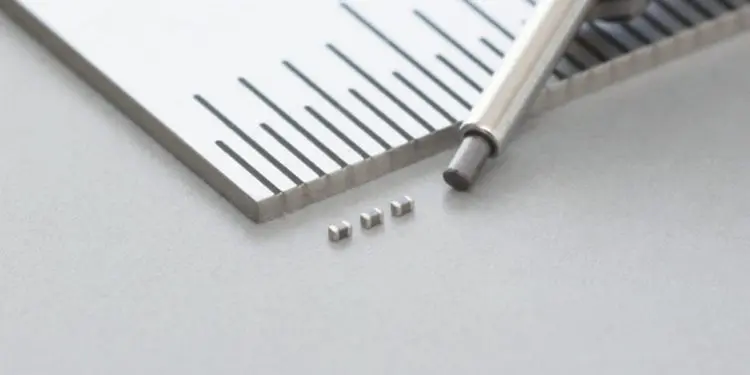Murata Manufacturing Co., Ltd. has been awarded an IEEE Milestone by the IEEE, the world’s largest international academic society in the electrical and electronics fields, for contributing to the development of industry with the commercialization of multilayer ceramic capacitors using nickel inner electrodes (hereinafter “Ni-MLCCs”).
The IEEE Milestones program was established in 1983 to recognize historical achievements among groundbreaking innovations in the electrical and electronics fields.
These are achievements for which more than 25 years have passed since being developed and which have contributed greatly to the development of society and industry.
About This Award
MLCCs were first used as products in the world in 1966. At that time, expensive precious metals were used to make the inner electrodes of MLCCs, resulting in a high unit cost. Accordingly, the applications for which they were used were limited. There was a technical challenge to replace precious metals with inexpensive metals. It was necessary to develop a dielectric ceramic material that could be sintered at a low oxygen concentration to avoid metal oxidation. Accordingly, Murata adopted an inexpensive nickel metal. Together with this, we developed a dielectric ceramic material. We then developed Ni-MLCCs combining quality and low price in 1973. We spent about eight years putting the material into practical use and building a production process. We began mass-producing Ni-MLCCs in 1982.
Ni-MLCCs are currently used in a wide range of markets including automobiles, home appliances, industrial equipment, and medical equipment in addition to communications equipment as an essential product for electronics. In this way, they are contributing to the development of industry. Murata has pursued downsizing, improvement in capacitance density, a reduction in manufacturing costs, and other improvements according to each application. We now supply more than 1 trillion Ni-MLCCs to customers around the world every year.
We would like to express our gratitude to our customers, suppliers, and all our other stakeholders for their tremendous support on the occasion of being awarded an IEEE Milestone. We will continue to promote innovation that leads to the provision of new value, support people’s lives by providing industry-leading innovative products and technologies, and move forward with the aim of continually increasing our corporate value.
Features of Ni-MLCCs
- Outstanding high-frequency characteristics and high-density mounting:
- In addition to outstanding frequency characteristics suitable for high-speed IC power supply circuits and high-frequency RF circuits, our Ni-MLCCs are small, have high capacitance density, and can be surface-mounted. Therefore, they contribute to the higher integration and greater communication speed of information terminals such as mobile phones.
- High withstand voltage and reliability:
- Ni-MLCCs have the outstanding withstand voltage and reliability required in the power electronics field. They are used in various power supply circuits mainly in car electronics.
Related Site
List of Companies That Have Been Awarded an IEEE Milestone in the Past (IEEE)
https://ieee-jp.org/en/activity/jchc/milestone_jusho.html































